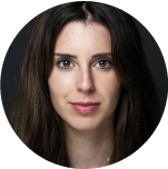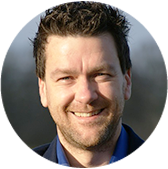Autism Spectrum Disorders
Conveniently located to serve the areas of Santa Monica, Venice, South Bay, Brentwood, Beverly Hills, Pasadena and all of Greater Los Angeles
Contents
What Is An Autism Spectrum Disorder

Common Signs Of An Autism Spectrum Disorder
There are great variations in the symptoms we associate with ASD. Every individual on the spectrum will show varying types and varying degrees of challenges with social skills, communication skills, repetitive behaviors and other and behavioral characteristics. Some of the characteristics observed in individuals with ASD are uniquely strengths that are extraordinary.
The symptoms of Autism cannot be explained or attributed to any intellectual disability or developmental delay.
Knowing a child’s normal early developmental milestones and what skills are expected to surface at what age can assist in early determination of a possible spectrum delay. There are some key developmental milestones in babies and toddlers that could be a red flag for concerns. These are as follows:
By 6-9 Months
- Minimal smiling, or warm and joyful expressions toward others
- Limited or no eye contact
- Minimal vocal play, smiles or other nonverbal signs of communication
By 12 Months
- Minimal to absent early babbling
- Limited to absent use of gestures to communicate needs and wants
- No response when name is called
- No “real” words
Other Signs And Symptoms At Any Age
- Impairments with relating to others, disconnected with loved ones, prefers to be alone
- Abnormal or inappropriate emotional responses
- Uses mostly nonverbal communication or demonstrates continued language delays
- Avoids eye contact with others
- Inappropriate use of objects such as toys
- Peculiar body movements that are repetitive such as hand flapping
- Repeats words or whole phrases over and over again
- Difficulties with adapting to change
- Sensory challenges which result in extreme reactions to sounds, lights, tastes, touch, textures
- Emotional outbreaks
- Unusual or unexplained fear or nervousness
Types Of Autism Spectrum Disorder
The disorders that are now categorized as Autism Spectrum Disorders include:
- Autism
- Aspergers Syndrome (AS)
- Pervasive Developmental Disorders (PDD)
Autism
There has been great debate about how to define Autism. Generally speaking Autism is a developmental disorder that is characterized by a broad range of difficulties in the areas of social interaction, communication, and behavior. For diagnostic purposed, the classification systems used, describe various clinical features and specify that a certain number of these features or criteria must be present in order for the diagnoses to be valid.
Clinical Features Of Autism
- Onset of the condition prior to age 3.
- Delay or abnormal functioning in social interaction such as eye gaze and facial expression.
- Delay or abnormal functioning in language skills used in social interactions and symbolic/imaginative play.
- Impaired communication skills such as lack of speech production, failure to initiate or sustain conversations, or repetitive use of language.
- Restricted, repetitive and stereotyped patterns of behavior, interests, and activities are manifested.
- Executive Dysfunction
- Sensory processing and sensory integration deficit
- Attention deficits specifically with joint attention
- Deficits in emotional regulation
- Auditory processing deficits
Asperger Syndrome (AS)
Aspergers is distinguished from Autism primarily on the basis of a preservation of language and cognitive capacities in the first 3 years of life. It is often characterized as a milder form of Autism with salient features of higher cognition, higher language skills, more socially motivated until adolescence and adulthood when social disabilities interfere with everyday life. Language acquisition of individuals with AS is often precocious where some children begin to speak before learning how to walk.
Clinical Features Of Asperger Syndrome (AS)
- Onset of Symptoms- Occurs later in childhood with language acquisition skills, cognitive skills developing appropriately in early childhood
- Social Functioning- Attachment patterns with family seem quite normal with minimal signs of a social disability. The disability becomes more apparent outside of the home in groups where they become awkward and will approach others in inappropriate or eccentric ways.
- Communication Patterns – Speech patterns have noticeable attributes such as poor prosody, fast rate of speech, and poor fluency. Speech may be tangential and quite circumstantial.
- Confined Interests – Will compile large amounts of factual information about a topic that will often dominate the content of a social exchanges.
- Motoric Challenges – Delayed acquisition of motor skills requiring coordination such as riding a bike, catching a ball, climbing on play structures.
- Anxiety- One of the most common comorbid conditions that impacts individuals with AS.
- Depression- One of the most common comorbid conditions that impacts individual’s with AS.
Pervasive Developmental Disorders – (PDD-NOS)

Clinical Features of NOS
- Milder form of Autism
- Social delays
- Communication and language deficits especially pragmatics and social conventions of language
- Difficulties understanding the expression of emotions
- Behavioral deficits such as emotional outbursts and tantrums
- Perseverations
Treatment
With the increased knowledge and research about Autism Spectrum Disorders there is a broad array of treatments that directly address the different aspects of ASD.
“Behavior intervention and cognitive-behavior interventions will address emotional regulation and other behavioral issues.”
Given the broad scope of deficits in ASD, treatment often requires a team approach involving professionals from a variety of disciplines including speech pathology, psychology, occupational therapy, physical therapy, and behavior therapy among others. Treatment approaches will focus on the individual deficits. For instance the speech pathologist will address the speech and language and communication deficits while the occupational therapist will work on sensory integration and sensorimotor functions. Behavior intervention and cognitive-behavior interventions will address emotional regulation and other behavioral issues.
Co-Morbidities
Autism Spectrum Disorders can be difficult to diagnose because the signs and symptoms of ASD often overlap with the signs and symptoms of a variety of other disorders and conditions. Autism Spectrum Disorders frequently co-occur with other developmental delays, learning disabilities, psychiatric conditions and medical conditions. Some of the most common of these are:
- ADHD
- Nonverbal Learning Disorders
- Anxiety
- Obsessive-Compulsive Disorders
- Sensory Disorders
- Intellectual Disabilities
- Developmental language disorders
- Hearing impairments
- Visual impairments
- Developmental Coordination Disorders
Risk Factors
The literature on the causes and risk factors for Autism Spectrum Disorders is extensive and points to many different possibilities. It is difficult to determine exactly what causes Autism Spectrum Disorders because of the vast combination of issues that are at play in contributing to the various types of ASD. Much of the work done in this area classifies risk factors into three prominent categories: environmental, biological and genetic.
- Genetic or chromosomal abnormalities or conditions
- Presence of other medical conditions such as neurofibromatosis
- Inheritance within families, brothers, sisters, twins or parents with ASD are at increased risk
- Maternal hypothyroidism
- Maternal thalidomide use
- Maternal valproic acid use
- Maternal cocaine or alcohol use
- Exposure to heavy metals and other toxins in the environment




